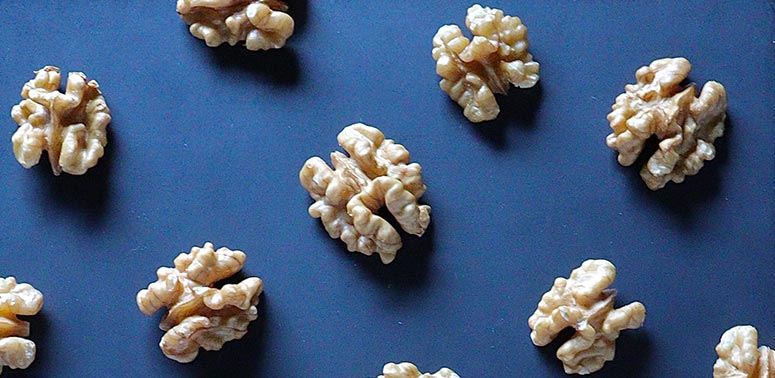By Dr Ruth Sellers with Dr Joanna Martin and Dr Olga Eyre | 03 March 2023
What is ADHD?
Attention deficit hyperactivity disorder (ADHD) is a common neurodevelopmental condition, characterised by difficulties in two domains: inattention and hyperactive-impulsive behaviours 1,2. Three subtypes of ADHD can be identified: predominantly inattentive, predominantly hyperactive-impulsive, and combined presentations. Symptoms onset in childhood and can persist across time and can reduce the quality of social, emotional, and academic/occupational functioning2,3,4.
Delayed diagnosis in young women
Some studies suggest that ADHD tends to present differently in boys and girls - girls may be more likely to be diagnosed with the inattentive subtype, whereas boys tend to be more hyperactive/impulsive 2,5. By their nature, inattentive symptoms may be less obvious for others to notice. It has also been suggested that girls may be more likely to engage in compensatory behaviours (e.g., socially adaptive behaviour, compliance) or coping strategies to mask behaviour2. Therefore, ADHD in women/girls is often not picked up – their difficulties may be missed and may not be diagnosed2,5. If they are diagnosed, this can often be in adolescence or adulthood, after experiencing years of difficulties6.
Boys and girls with ADHD also present with different co-occurring difficulties. Externalising problems (e.g., rule breaking, fighting) are more common in boys with ADHD compared to girls7. In comparison, girls more often have internalising problems (e.g., anxiety and depression)2,5.
Boys and girls with ADHD also present with different co-occurring difficulties. Externalising problems (e.g., rule breaking, fighting) are more common in boys with ADHD compared to girls. In comparison, girls more often have internalising problems (e.g., anxiety and depression)
It is thought these differences may also contribute to lower rates of referral for ADHD in girls in childhood2. Indeed, the inattentive subtype of ADHD has been found to be the most prevalent amongst adults as demands for attention ability increase in adulthood7. It has been suggested that this delay in recognition of inattentive ADHD may explain some of the ‘new’ cases of adult-onset ADHD, where self-referral is much more common7. Indeed, the greater than 2:1 ratio in males to females shrinks closer to 1:1 in adulthood6.
Adult ADHD – is it the same or different?
There is increasing interest in adult ADHD1. Around 67% of children diagnosed with ADHD experience ADHD symptoms that continue to impair functioning as adults7. In clinical samples of children with combined type ADHD, these numbers are even higher, with approximately 80% of individuals having persistent symptoms into early adulthood. Historically, it was assumed that adult and childhood ADHD affect the same people.
However, several studies have suggested that ADHD symptoms can first emerge during adolescence or adulthood1, 7, 8, 9 – it was estimated that between 67-87% of adults with ADHD present as having a new-onset– this was been observed in the UK, New Zealand and Brazil7, 8. This observation has raised a number of pressing questions, including:
- Is ADHD that onsets later (adolescence/adulthood) similar to ADHD that onsets in childhood? Is it the same condition?
- Or, does adult ADHD represent a different condition, rather than a continuation of childhood-onset difficulties?
A different condition?
Some evidence suggests that there exists at least a small group of individuals who can be considered to have adult-onset ADHD, which could be a distinct condition10, 11. We know that ADHD is highly heritable and if adult ADHD is the same condition, we would expect the same genetic factors to be linked to child and adult ADHD12. However, some studies have suggested that adult-onset ADHD is not associated with increased ADHD genetic risk(see 13), which indicates that it could have somewhat different causes. It has even been hypothesised that late-onset ADHD may be a variant of depression: ADHD shows a strong genetic overlap with depression, and later-onset ADHD, like depression 12, 13.
There is an ongoing debate about this issue, and some studies have summarised method issues/concerns:
- Caye, A., Sibley, M. H., Swanson, J. M., & Rohde, L. A. (2017). Late-onset ADHD: understanding the evidence and building theoretical frameworks. Current psychiatry reports, 19, 1-10.
- Taylor, L. E., Kaplan-Kahn, E. A., Lighthall, R. A., & Antshel, K. M. (2021). Adult-Onset ADHD: a critical analysis and alternative explanations. Child Psychiatry & Human Development, 1-19.
However, many people considered as having a later-onset of ADHD, whilst not meeting diagnostic criteria for ADHD in childhood, do show some ADHD symptoms, or other behavioural difficulties11, 14. This finding could suggest that those with ‘adult-onset’ ADHD may be misclassified14.
The same condition?
One recent paper15 found that late-onset ADHD seemed to be similar to childhood-onset ADHD: Late-onset and childhood-onset ADHD were associated with similar genetic risks for ADHD, as well as with childhood cognitive difficulties.
Late-onset ADHD has been associated with higher IQ, higher reading ability, lower externalising and internalising problems, family income, and maternal education compared to child-onset persistent ADHD8, 15, 16. This observation suggests that individual and family resources may allow individuals to compensate for, or scaffold childhood ADHD risk, but symptoms may become evident later in development, when youth become increasingly independent and educational/occupational demands are increased.
What next…?
Symptoms of ADHD can be missed, particularly in young women, and may not be diagnosed until adulthood. But, overall, there is growing recognition of the importance of diagnosing and treating ADHD in adulthood. It is estimated that around 20%-50% of parents of children with ADHD will have ADHD themselves17.
In adulthood, hyperactivity can be experienced as feelings of restlessness. Inattention may manifest as difficulty completing chores or work-based activities (e.g. filling out forms, remembering appointments, meeting deadlines)2. ADHD in adults can impact on family functioning18.
Parents with ADHD may have difficulties introducing strategies for behavioural problems in their children17, 18. Screening for parent ADHD might be useful where clinicians see children with ADHD, to support adults to manage their ADHD symptoms as well as to support parents to support their children.

About the authors
Dr Ruth Sellers
Dr Ruth Sellers is Affiliate Lecturer at the Rudd Centre, Faculty of Education, University of Cambridge.
Dr Joanna Martin
Centre for Neuropsychiatric Genetics and Genomics
Dr Olga Eyre
Wolfson Centre for Young Peoples Mental Health, Cardiff University
Learn more about the exceptional work that the Rudd Centre does and follow for the latest updates.
- Follow us on Twitter: @RuddCambridge
- Rudd Centre website
Share this page
Further Information and Support
References
1Song, P., Zha, M., Yang, Q., Zhang, Y., Li, X., & Rudan, I. (2021). The prevalence of adult attention-deficit hyperactivity disorder: A global systematic review and meta-analysis. Journal of global health, 11.
2Young, S., Adamo, N., Ásgeirsdóttir, B. B., Branney, P., Beckett, M., Colley, W., ... & Woodhouse, E. (2020). Females with ADHD: An expert consensus statement taking a lifespan approach providing guidance for the identification and treatment of attention-deficit/hyperactivity disorder in girls and women. BMC psychiatry, 20(1), 1-27
3Wehmeier, P. M., Schacht, A., & Barkley, R. A. (2010). Social and emotional impairment in children and adolescents with ADHD and the impact on quality of life. Journal of Adolescent health, 46(3), 209-217.
4Garcia, C. R., Bau, C. H. D., Silva, K. L. D., Callegari-Jacques, S. M., Salgado, C. A. I., Fischer, A. G., ... & Grevet, E. H. (2012). The burdened life of adults with ADHD: impairment beyond comorbidity. European Psychiatry, 27(5), 309-313
5Mowlem, F., Agnew-Blais, J., Taylor, E., & Asherson, P. (2019). Do different factors influence whether girls versus boys meet ADHD diagnostic criteria? Sex differences among children with high ADHD symptoms. Psychiatry Research, 272, 765-773
6Chronis‐Tuscano, A. (2022). ADHD in girls and women: a call to action–reflections on Hinshaw et al.(2021). Journal of Child Psychology and Psychiatry, 63(4), 497-499.
7Zalsman, G., & Shilton, T. (2016). Adult ADHD: A new disease?. International journal of psychiatry in clinical practice, 20(2), 70-76.
8Caye, A., Swanson, J., Thapar, A., Sibley, M., Arseneault, L., Hechtman, L., ... & Rohde, L. A. (2016). Life span studies of ADHD—conceptual challenges and predictors of persistence and outcome. Current psychiatry reports, 18, 1-11.
9Moffitt, T. E., Houts, R., Asherson, P., Belsky, D. W., Corcoran, D. L., Hammerle, M., ... & Caspi, A. (2015). Is adult ADHD a childhood-onset neurodevelopmental disorder? Evidence from a four-decade longitudinal cohort study. American Journal of Psychiatry, 172(10), 967-977.
10Solanto, M. V. (2021). Late-onset ADHD: A review of the evidence. The ADHD Report, 29(8), 1-8.
11Asherson, P., & Agnew‐Blais, J. (2019). Annual Research Review: Does late‐onset attention‐deficit/hyperactivity disorder exist?. Journal of Child Psychology and Psychiatry, 60(4), 333-352.
12Faraone, S. V., & Larsson, H. (2019). Genetics of attention deficit hyperactivity disorder. Molecular psychiatry, 24(4), 562-575.
13Riglin, L., Collishaw, S., Thapar, A. K., Dalsgaard, S., Langley, K., Smith, G. D., ... & Thapar, A. (2016). Association of genetic risk variants with attention-deficit/hyperactivity disorder trajectories in the general population. JAMA psychiatry, 73(12), 1285-1292
14Cooper, M., Hammerton, G., Collishaw, S., Langley, K., Thapar, A., Dalsgaard, S., ... & Riglin, L. (2018). Investigating late‐onset ADHD: a population cohort investigation. Journal of Child Psychology and Psychiatry, 59(10), 1105-1113.
15Riglin, L., Wootton, R. E., Livingston, L. A., Agnew-Blais, J., Arseneault, L., Blakey, R., ... & Thapar, A. (2022). “Late-onset” ADHD symptoms in young adulthood: Is this ADHD?. Journal of attention disorders, 26(10), 1271-1282.
16Kosaka, H., Fujioka, T., & Jung, M. (2019). Symptoms in individuals with adult-onset ADHD are masked during childhood. European archives of psychiatry and clinical neuroscience, 269, 753-755.
17Kooij, S. J., Bejerot, S., Blackwell, A., Caci, H., Casas-Brugué, M., Carpentier, P. J., ... & Asherson, P. (2010). European consensus statement on diagnosis and treatment of adult ADHD: The European Network Adult ADHD. BMC psychiatry, 10, 1-24.
18Starck, M., Grünwald, J., & Schlarb, A. A. (2016). Occurrence of ADHD in parents of ADHD children in a clinical sample. Neuropsychiatric disease and treatment, 581-588.
Image attributes
- Walnut Brain: Priyanka Singh on Unsplash
- Girl with ear defenders: Ben Mullins on Unsplash
- Umbrellas: Clare Dann on Unsplash



